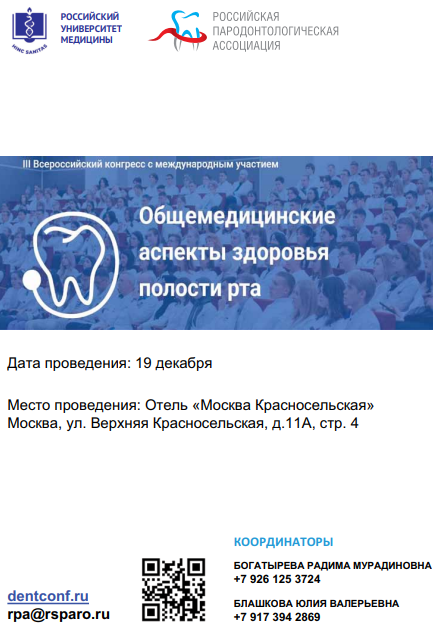Cross facial nerve grafting as the first stage of congenital facial palsy treatment in a 5-year-old child: a clinical case
https://doi.org/10.33925/1683-3031-2021-22-1-72-78
Abstract
Relevance. Facial palsy is a severe somatic disease that significantly deteriorates the quality of life and affects adaptation in society. Both children and their families bear the burden of treating pediatric facial palsy. Some types of acquired facial nerve neuropathy require conservative treatment. Neuroplasty is a method of treating recently acquired acute facial palsy. The aplasia of the facial nerve and facial muscles, which requires myoneuroplasty in two stages, determines the complexity of the congenital facial palsy treatment. Cross-facial nerve grafting is the first stage of myoneuroplasty. A separate article describes the clinical case due to congenital aplasia of the buccal branch of the right facial nerve and the muscles innervated by it and due to the small number of surgeries performed in Russia in children with congenital facial palsy.
Purpose. We aimed to prepare a 5-year-old child for free revascularized gracilis muscle transfer in the position of the right zygomaticus major muscle to treat a congenital facial palsy.
Materials and methods. The paper describes a clinical case of cross facial nerve grafting by microsurgical techniques in a 5-year-old child with congenital palsy of the right zygomaticus major muscle at the Department of Pediatric Maxillofacial Surgery of the Maxillofacial, Plastic Surgery and Dentistry Clinical Center of A.I. Yevdokimov MSUMD. Results. In the postoperative period, the patient had no complications. Postoperative scars in the maxillofacial area were aesthetically acceptable. Numbness of soft tissues in the leg and foot was insignificant. The final result of the treatment would be after the second stage of treatment, i.e., free revascularized gracilis muscle transfer.
Conclusion. Pediatric cross-facial nerve grafting is a technically advanced surgery. The surgery does not have anthropometric contraindications for a 5-year-old. The use of a microscope and intraoperative neuromonitoring are recommended.
About the Authors
E. D. AskerovRussian Federation
Emil D. Askerov - DDS, Maxillofacial surgeon, Department of Pediatric Maxillofacial surgery, Clinical Center of Maxillofacial, Reconstructive and Recovery and Plastic surgery, A.I. Yevdokimov Moscow State University of Medicine and Dentistry.
Moscow.
O. Z. Topolnitsky
Russian Federation
Orest Z. Topolnitsky - Distinguished physician of the Russian Federation, DDS, PhD, DSc, Professor, Head of the Department of Pediatric Maxillofacial Surgery, A.I. Yevdokimov Moscow State University of Medicine and Dentistry.
Moscow.
References
1. Gasteratos K, Azzawi SA, Vlachopoulos N, Lese I, Spyropoulou GA, Grobbelaar AO. Workhorse Free Functional Muscle Transfer Techniques for Smile Reanimation in Children with Congenital Facial Palsy: Case Report and Systematic Review of the Literature. J Plast Reconstr Aesthet Surg. 2021;74(7):1423-1435. doi: 10.1016/j.bjps.2021.01.007.
2. Babl FE, Mackay MT, Borland ML, Herd DW, Ko-char A, Hort J, et al. Bell's Palsy in Children (BellPIC): protocol for a multicentre, placebo-controlled randomized trial. BMC Pediatrics. 2017;17(1):53. doi: 10.1186/s12887-016-0702-y
3. Bayrak SB, Kriet JD, Humphrey CD. Masseteric to buccal branch nerve transfer. Curr Opin Otolaryngol Head Neck Surg. 2017 Aug;25(4):280-285. doi: 10.1097/MOO.0000000000000380
4. Urban MJ, Eggerstedt M, Varelas E, Epsten MJ, Beer AJ, Smith RM, et al. Hypoglossal and Masseteric Nerve Transfer for Facial Reanimation: A Systematic Review and Meta-Analysis. Facial Plastic Surgery & Aesthetic Medicine. 2022;24(1):10-17. doi: 10.1089/fpsam.2020.0523
5. Sharma PR, Zuker RM, Borschel GH. Gracilis Free Muscle Transfer in the Treatment of Pediatric Facial Paralysis. Facial Plast Surg. 2016;32(2):199-208. doi: 10.1055/s-0036-1582248
6. Shargorodsky J, Lin HW, Gopen Q. Facial nerve palsy in the pediatric population. Clin Pediatr (Phila). 2010;49(5):411-417. doi: 10.1177/0009922809347798
7. Zalazaeva EA. Creating a positive position to dental treatment through the correction of psychoemotional status in children with cerebral paralysis. Pediatric dentistry and dental profilaxis. 2017;16(2):41-44. (In Russ.). Available from: https://www.detstom.ru/jour/article/view/57
8. Goldberg C, DeLorie R, Zuker RM, Manktelow RT. The effects of gracilis muscle transplantation on speech in children with Moebius syndrome. J Craniofac Surg. 2003;14(5):687-90. doi: 10.1097/00001665-200309000-00015
9. Birgfeld C, Heike C. Craniofacial Microsomia. Clin Plast Surg. 2019;46(2):207-221. doi: 10.1016/j.cps.2018.12.001
10. Nguyen PD, Faschan KS, Mazzaferro DM, Konieczny T, Jackson OA, Bartlett SP. Comparison of Lengthening Temporalis Myoplasty and Free-Gracilis Muscle Transfer for Facial Reanimation in Children. J Craniofac Surg. 2020 ;31(1):85-90. doi: 10.1097/SCS.0000000000005885
11. Peng GL, Azizzadeh B. Cross-facial nerve grafting for facial reanimation. Facial Plast Surg. 2015;31(2):128-33. doi: 10.1055/s-0035-1549046
Review
For citations:
Askerov E.D., Topolnitsky O.Z. Cross facial nerve grafting as the first stage of congenital facial palsy treatment in a 5-year-old child: a clinical case. Pediatric dentistry and dental prophylaxis. 2022;22(1):72-78. https://doi.org/10.33925/1683-3031-2021-22-1-72-78





































